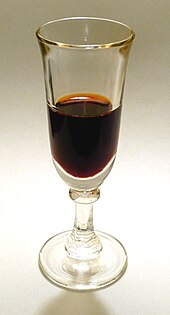This article needs additional citations for verification. (November 2018) |

A tincture is typically an extract of plant or animal material dissolved in ethanol (ethyl alcohol). Solvent concentrations of 25–60% are common, but may run as high as 90%.[1] In chemistry, a tincture is a solution that has ethanol as its solvent. In herbal medicine, alcoholic tinctures are made with various ethanol concentrations, which should be at least 20% alcohol for preservation purposes.[1][2]
Other solvents for producing tinctures include vinegar, glycerol (also called glycerine), diethyl ether and propylene glycol, not all of which can be used for internal consumption. Ethanol has the advantage of being an excellent solvent for both acidic and basic (alkaline) constituents. A tincture using glycerine is called a glycerite. Glycerine is generally a poorer solvent than ethanol. Vinegar, being acidic, is a better solvent for obtaining alkaloids but a poorer solvent for acidic components. For individuals who choose not to ingest alcohol, non-alcoholic extracts offer an alternative for preparations meant to be taken internally.
Low volatility substances such as iodine and mercurochrome can also be turned into tinctures.
- ^ a b Groot Handboek Geneeskrachtige Planten by Geert Verhelst
- ^ Ullian, Naomi (2016-09-19). "How To Make A Medicinal Mushroom Double-Extraction Tincture". Herbal Academy. Retrieved 2021-01-12.